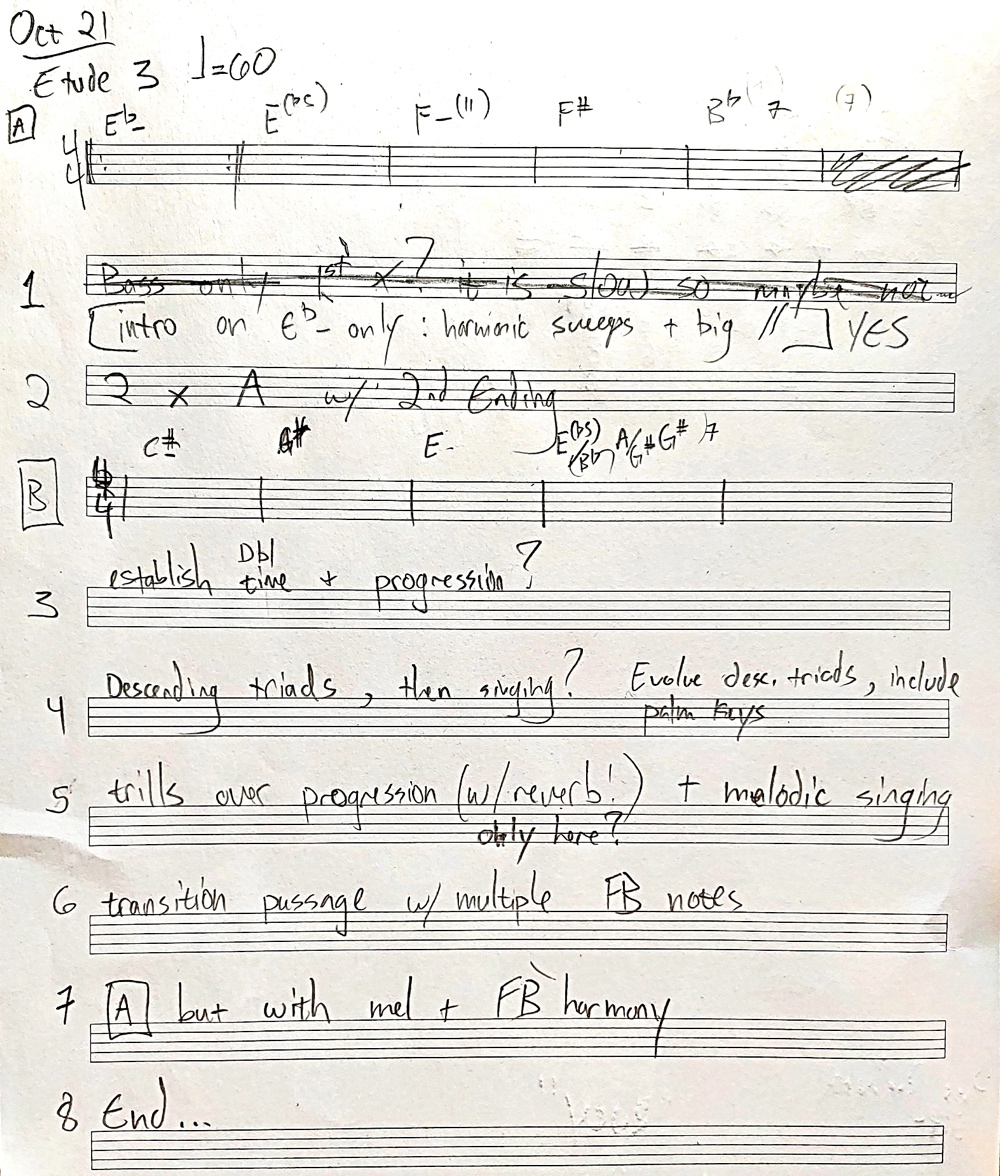Analysis
Having established a variety of grammar, stable equipment, and useful notation for my feedback saxophone instrumentarium, composing was becoming more intuitive and required less analysis. Unlike the first works, for which I could not pre-conceive the musical material, I now had a firm grasp of what my system was capable of and could imagine new combinations of the sounds I had already discovered. Rather than attempt new feedback techniques, this piece explored the grammar I had begun to establish in the first two pieces and drew from the work of Colin Stetson for inspiration. I could not ignore the sonic possibilities that a throat microphone could bring to this instrumentarium, and, moving away from improvising as a method of discovery, I wanted to write a through-composed piece in Stetson’s style. Regarding the feedback tones, I had worked with low gestures by themselves in Stride, used them as high drones in harmony with similarly pitched acoustic tones in Doina, but I had yet to explore high feedback drones over low conventional sounds. These elements laid the conceptual foundation for this last work.
Grammar
Figure 5-10 shows a sketch of the primary material for what became the B section of Yen.1 The feedback tone is a high drone over a descending ostinato that changes in a predictable harmonic rhythm. The figure also shows a simple vocalization, which would be amplified through a contact microphone, to add an additional melodic line into the piece’s texture. I also continued to refine my instrumentarium and found two pieces of equipment that improved the practical aspect of traveling to perform these works. The Boss FV-50L2 volume pedal was lighter, smaller, and quieter than the FV-500L, which occasionally made static noise in operation, and the Behringer GM-1083 amplifier was smaller and lighter than the Roland Cube 30, with most other functions being equal.
Notation
Figure 5-11 shows an early sketch of the form for Yen. Unlike Stride, with a set form of improvised cells, and Doina, a transcription with a form that emerged through its performance, the form of Yen was pre-conceived as ABA and then through-composed. The new element of the score, relative to the first two pieces, is the vocal notation. To include this third layer of music in the same staff as the rest of the material, the vocalizations are notated as square noteheads (fig. 5-12).
Figure 5‑12: Yen excerpt.4
Implementation
Rather than in a formalized studio setting, this recording of Yen was made live off the floor during a concert I gave at the Canadian Music Centre, Toronto, in the summer of 2022. Despite it being fully composed, and using little improvisation in its interpretation, the score was created after I had done several performances. The score can be found in Appendix 3 and the video recording is below.


